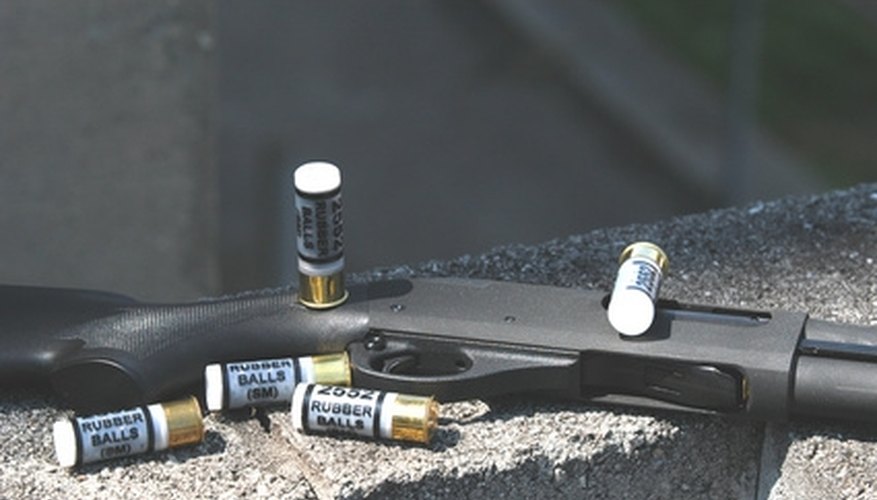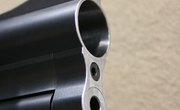
Shotguns are effective at shooting moving targets by casting a pattern of pellets over a wide area. There are six different gauges, or barrel sizes, with the 20 and 28 gauges falling in the mid to upper range. Because of their smaller size and lighter recoil, both the 20 and 28 gauges are popular among sportsman for small game hunting and target shooting at ranges of up to 35 yards.
History
Shotguns became popular in the late 18th century and it is arguable that it was the gun that won the West. Because of its versatility the shotgun could be used for hunting for virtually any type of game as well as for self-defense. As interest grew in shooting strictly for sport, as opposed to necessity, the 20 and 28 gauge shotguns became popular because of their light recoil.
Function
Shotguns are named for the way they propel a load of shot, or pellets, that rapidly spread out as they leave the barrel. Pellets come in different sizes that must be matched to the target. Smaller shot creates a denser pattern that rapidly sheds its energy, whereas larger shot creates a more open pattern with greater retained energy. This is similar to throwing a handful of sand compared to a handful of pebbles. The larger the target, the larger the pellets must be for maximum effectiveness.
Size
Shotguns sizes are referred to as gauges that is a measurement system using balls of the same diameter as the barrel that will add up to one pound. A larger number gauge indicates a smaller bore as it would take more balls of a smaller diameter to equal one pound. When comparing the 20 gauge vs. the 28 gauge it would take 20 balls the diameter of the 20 gauge's barrel to equal one pound, whereas a 28 gauge would require 28 balls.
Misconceptions
While it may be assumed that the larger gauges are more powerful, this is not exactly correct. Larger gauges do have a greater effective range, and are able to cast a wider pattern with greater density as they are able to hold more powder and pellets due to their larger bore diameters. However, when comparing 20 gauge vs. 28 gauge shells of the same lengths, loaded with identical amounts of powder and pellets, their effectiveness will be virtually the same.
Uses
In comparing the 20 gauge vs. 28 gauge, both are aptly suited for hunting birds, small game and shooting skeet. With proper ammunition, the 20 gauge is suitable for birds up to the size of turkeys out to 30 to 35 yards. The 28 gauge is suited for birds up to the size of pheasants and small game the size of rabbits inside 25 yards and is usually used when working in close range with hunting dogs.
Recoil
Because of their smaller size and low recoil, both the 20 gauge and the 28 gauge are common choices for women and youths, inexperienced or recoil-sensitive shooters. The 28 gauge's recoil is very mild and has a low report that is best described as a loud crack that resembles a tree branch breaking. A 20 gauge's recoil and report are a slightly stronger, but a practical trade-off for the added benefit of a shotgun with more versatility.
Warnings
Always use extreme caution when using firearms. Even the small 28 gauge can cause serious injury or death if mishandled. If you are inexperienced be sure to obtain proper instruction on firearm use and care from a qualified instructor. Always be certain to keep the barrel pointed in a safe direction at all times and never point a firearm at anything you do not intend to shoot.



